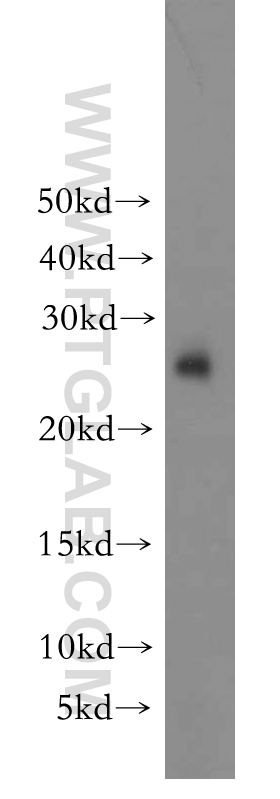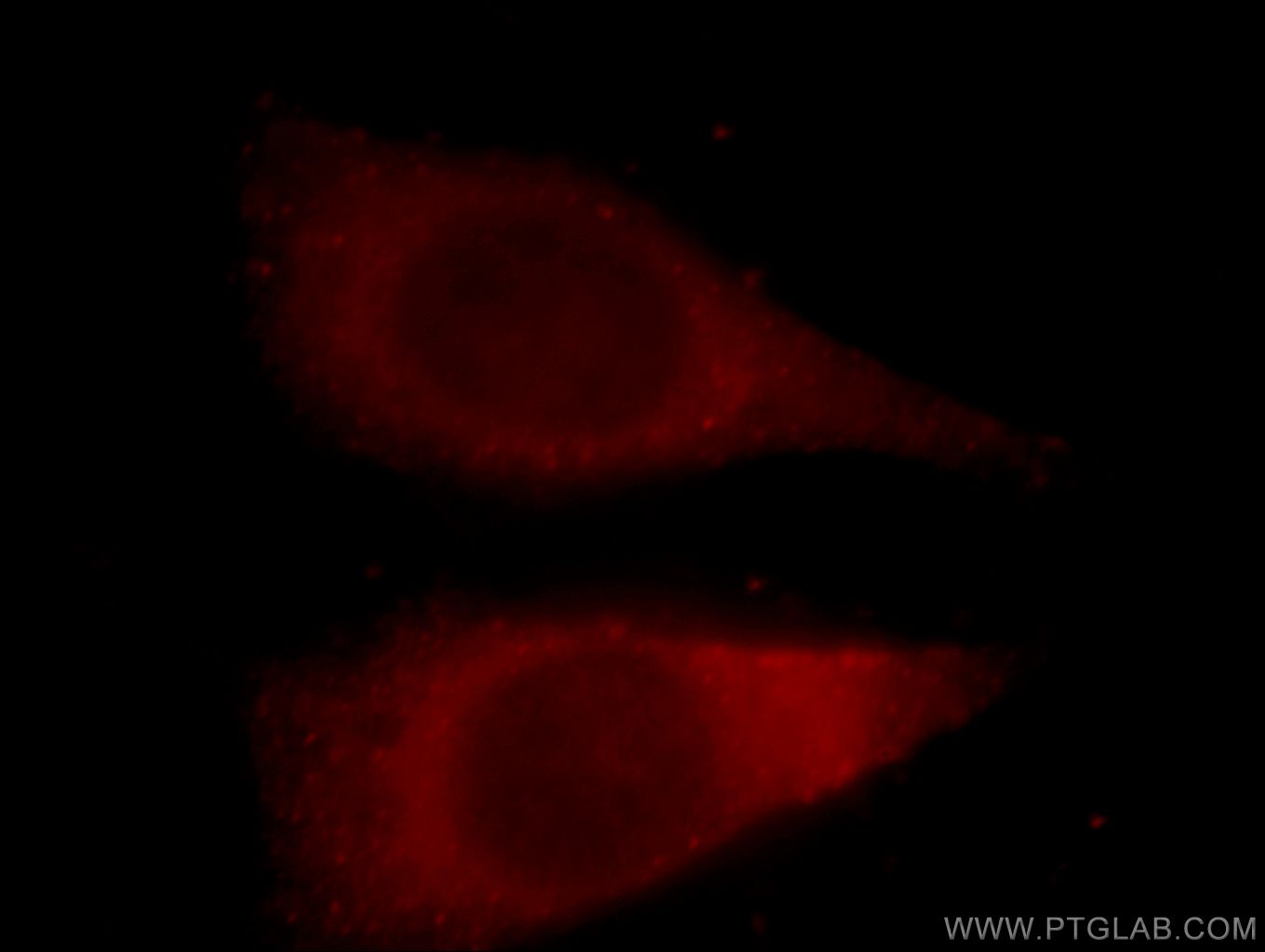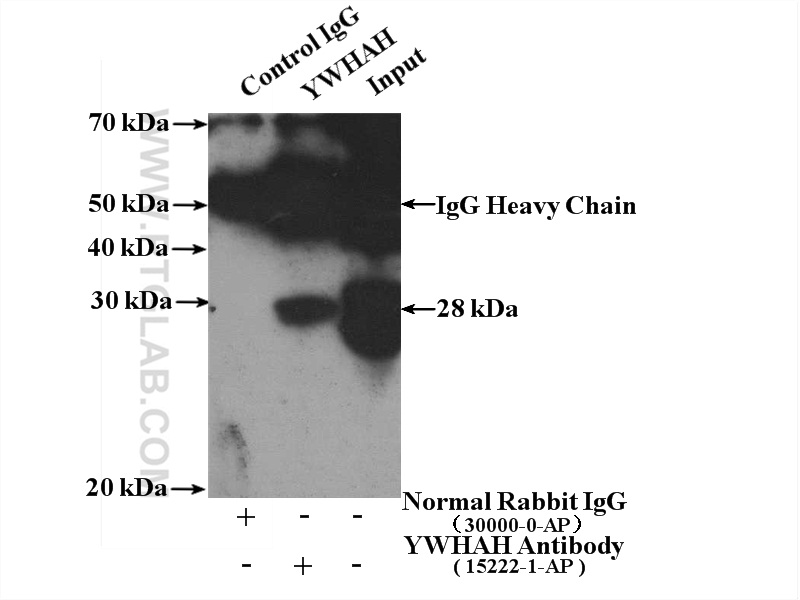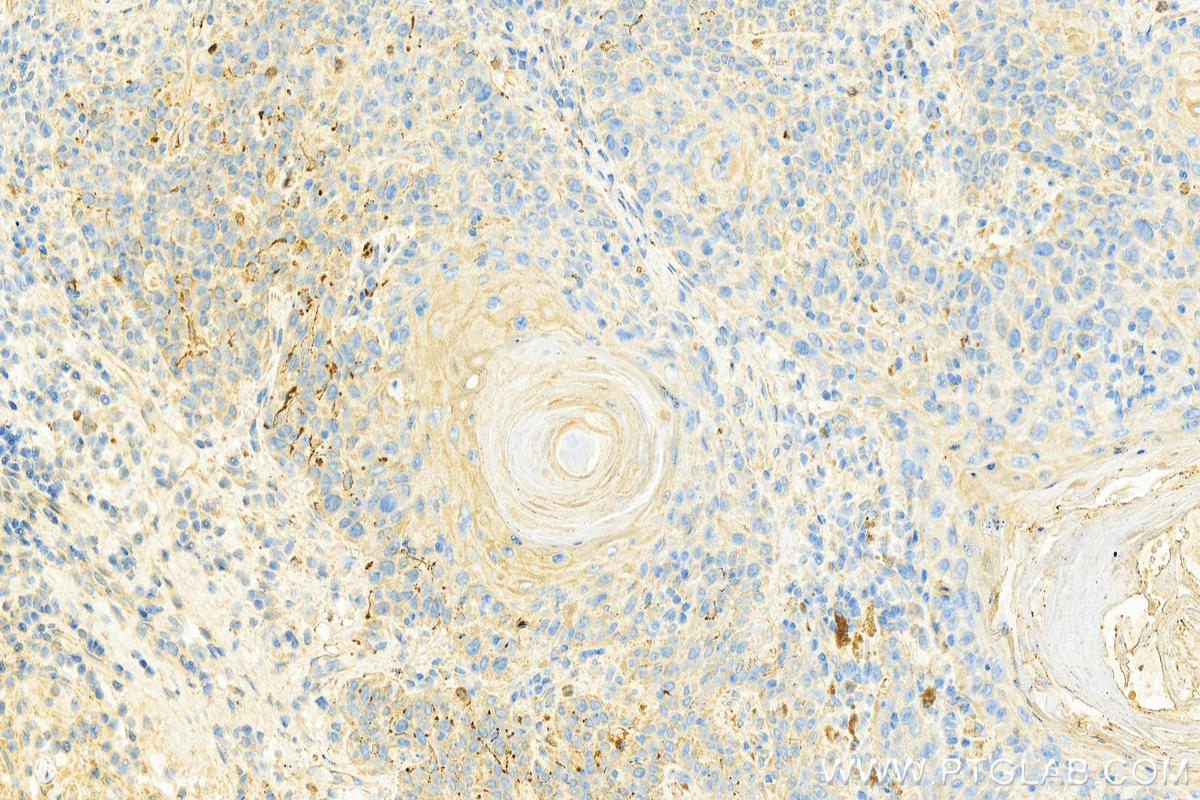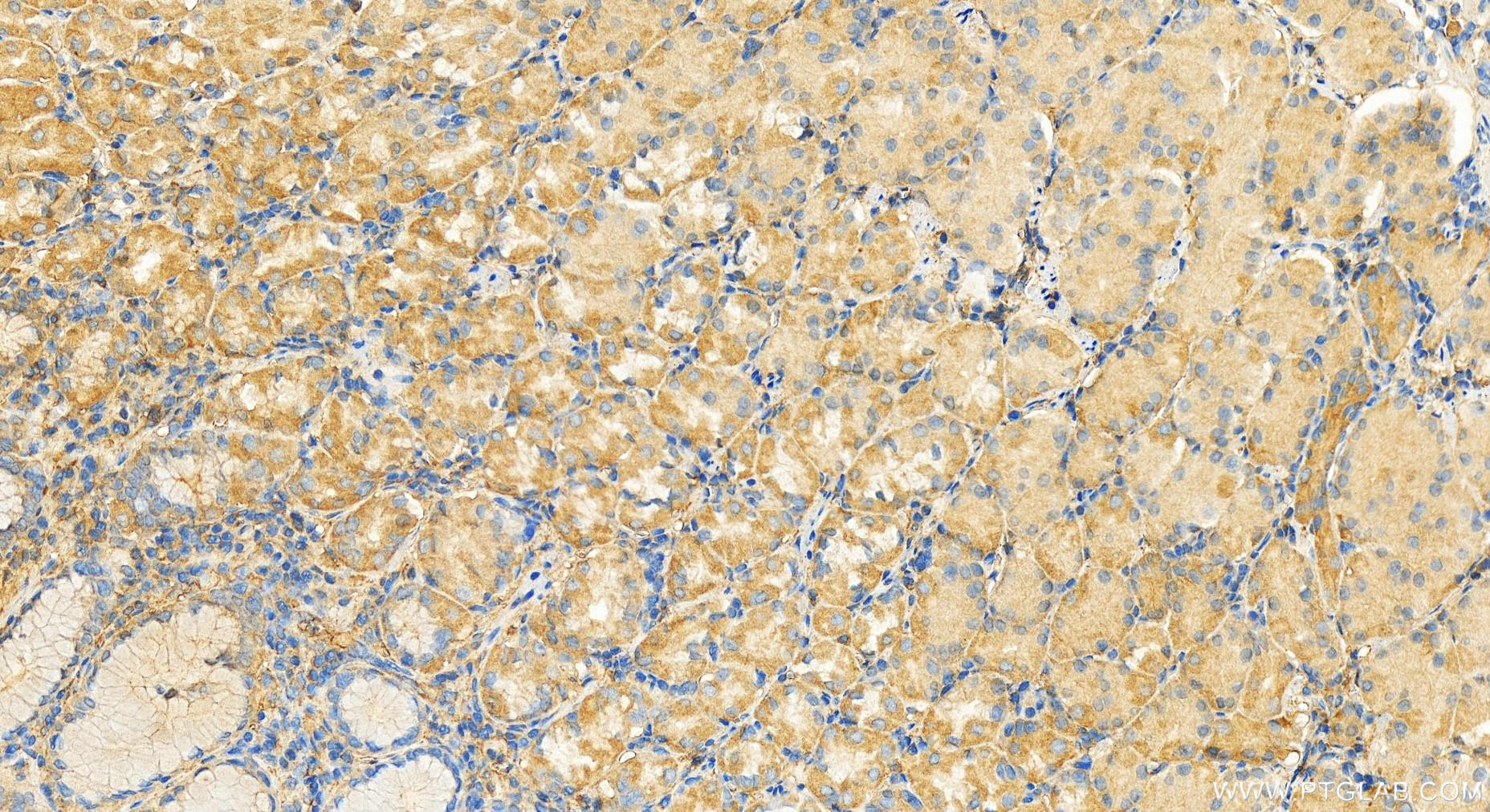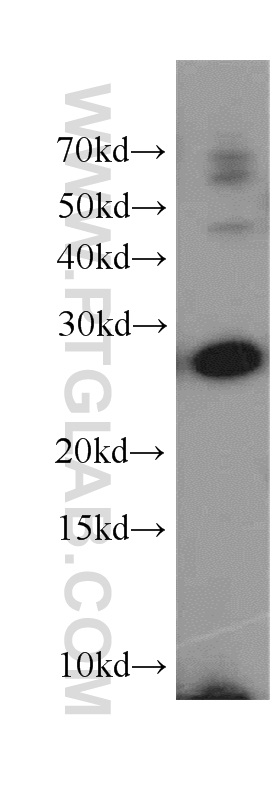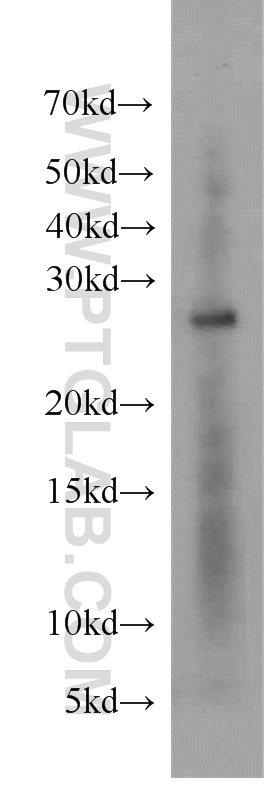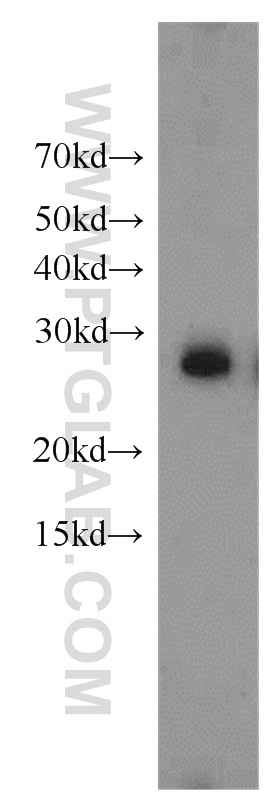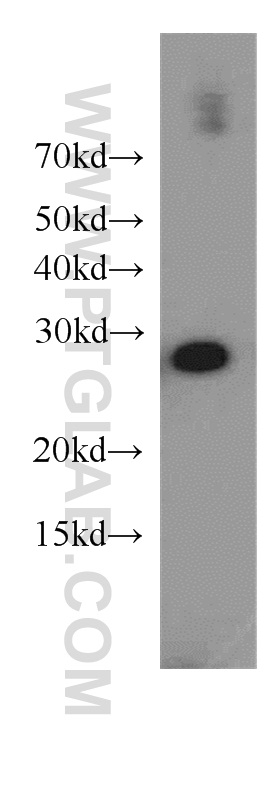验证数据展示
经过测试的应用
| Positive WB detected in | human brain tissue, A431 cells, mouse brain tissue, NIH/3T3 cells, Raji cells |
| Positive IP detected in | NIH/3T3 cells |
| Positive IHC detected in | human skin cancer tissue, human stomach tissue Note: suggested antigen retrieval with TE buffer pH 9.0; (*) Alternatively, antigen retrieval may be performed with citrate buffer pH 6.0 |
| Positive IF/ICC detected in | Hela cells |
推荐稀释比
| 应用 | 推荐稀释比 |
|---|---|
| Western Blot (WB) | WB : 1:500-1:2000 |
| Immunoprecipitation (IP) | IP : 0.5-4.0 ug for 1.0-3.0 mg of total protein lysate |
| Immunohistochemistry (IHC) | IHC : 1:50-1:500 |
| Immunofluorescence (IF)/ICC | IF/ICC : 1:10-1:100 |
| It is recommended that this reagent should be titrated in each testing system to obtain optimal results. | |
| Sample-dependent, Check data in validation data gallery. | |
产品信息
15222-1-AP targets YWHAH in WB, IHC, IF/ICC, IP, ELISA applications and shows reactivity with human, mouse, rat samples.
| 经测试应用 | WB, IHC, IF/ICC, IP, ELISA Application Description |
| 文献引用应用 | WB, IF, IP |
| 经测试反应性 | human, mouse, rat |
| 文献引用反应性 | human, mouse, rat |
| 免疫原 | YWHAH fusion protein Ag7435 种属同源性预测 |
| 宿主/亚型 | Rabbit / IgG |
| 抗体类别 | Polyclonal |
| 产品类型 | Antibody |
| 全称 | tyrosine 3-monooxygenase/tryptophan 5-monooxygenase activation protein, eta polypeptide |
| 别名 | 14-3-3 eta, 14-3-3 protein eta, 14-3-3, 14 3 3 protein eta |
| 计算分子量 | 28 kDa |
| 观测分子量 | 28 kDa |
| GenBank蛋白编号 | BC003047 |
| 基因名称 | YWHAH |
| Gene ID (NCBI) | 7533 |
| RRID | AB_10863119 |
| 偶联类型 | Unconjugated |
| 形式 | Liquid |
| 纯化方式 | Antigen affinity purification |
| UNIPROT ID | Q04917 |
| 储存缓冲液 | PBS with 0.02% sodium azide and 50% glycerol , pH 7.3 |
| 储存条件 | Store at -20°C. Stable for one year after shipment. Aliquoting is unnecessary for -20oC storage. |
背景介绍
YWHAH (also known as 14-3-3 eta) is a member of 14-3-3 proteins which were the first phosphoserine/phosphothreonine-binding proteins to be discovered. 14-3-3 family members interact with a wide spectrum of proteins and possess diverse functions. Mammals express seven distinct 14-3-3 isoforms (gamma, epsilon, beta, zeta, sigma, theta, tau) that form multiple homo- and hetero- dimmers. 14-3-3 proteins display the highest expression levels in the brain, and have been implicated in several neurodegenerative diseases, including Alzheimer's disease and amyotrophic lateral sclerosis. This antibody was raised against the full-length YWHAH.
实验方案
| Product Specific Protocols | |
|---|---|
| WB protocol for YWHAH antibody 15222-1-AP | Download protocol |
| IHC protocol for YWHAH antibody 15222-1-AP | Download protocol |
| IF protocol for YWHAH antibody 15222-1-AP | Download protocol |
| IP protocol for YWHAH antibody 15222-1-AP | Download protocol |
| Standard Protocols | |
|---|---|
| Click here to view our Standard Protocols |
发表文章
| Species | Application | Title |
|---|---|---|
Front Cell Dev Biol Circulating Exosomal MiR-107 Restrains Tumorigenesis in Diffuse Large B-Cell Lymphoma by Targeting 14-3-3η. | ||
Cell Biol Int 14-3-3-η interacts with BCL-2 to protect human endothelial progenitor cells from ox-LDL-triggered damage | ||
Eur J Pharmacol Capsaicin prevents mitochondrial damage, protects cardiomyocytes subjected to anoxia/reoxygenation injury mediated by 14-3-3η/Bcl-2. | ||
J Exp Clin Cancer Res 14-3-3ζ inhibits heme oxygenase-1 (HO-1) degradation and promotes hepatocellular carcinoma proliferation: involvement of STAT3 signaling.
| ||
Cells Identification of YWHAH as a Novel Brain-Derived Extracellular Vesicle Marker Post Long-Term Midazolam Exposure during Early Development | ||
J Hazard Mater YTHDC2 mediated RNA m6A modification contributes to PM2.5-induced hepatic steatosis |
